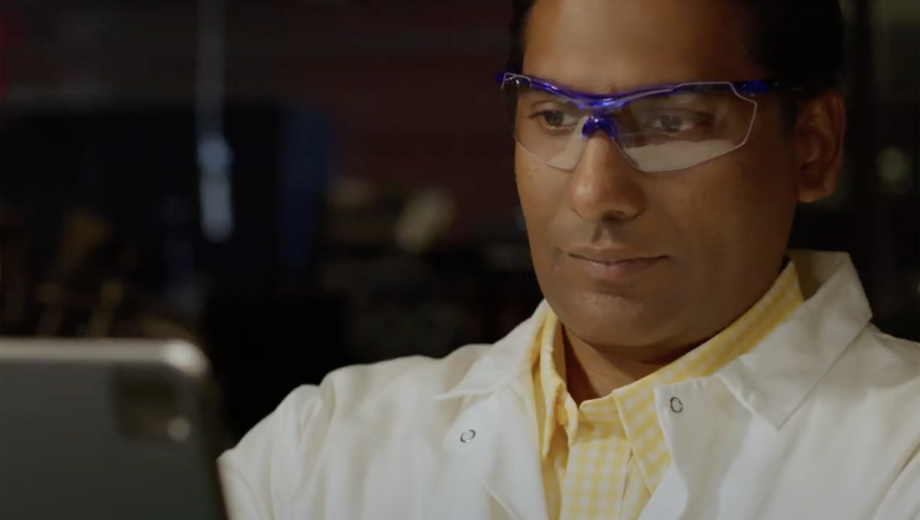July 25, 2023

There are a lot of research centers and labs at Mizzou collecting and analyzing data from images. Medical scans from the Roy Blunt NextGen Precision Health building. Microscopic images of tiny particles interacting at the nanoscale level. Aerial images collected by drones over crops growing at South Farm.
Now, a Mizzou Engineer is leading an interdisciplinary project that will provide a large-scale storage solution for the thousands of images being generated daily and will leverage artificial intelligence to help researchers analyze the data they collect.
Prasad Calyam—Greg L. Gilliom Professor of Cyber Security—is the principal investigator of a new National Science Foundation (NSF) grant to significantly increase computational storage and improve data analytics for Mizzou researchers. The storage resources secured by this grant are the latest of what he says has been a decade-long progression to expand Mizzou’s cloud, connecting campus with national science networks and resources.
The Research Instrumentation Science Environment (RISE) grant adds 1.2 Petabytes of storage to the Hellbender, the UM System’s new High-Power Computing infrastructure. That translates to 9.6 million gigabytes of data. Of that, 20% of the storage will be part of a national open science data platform and puts MU on the national map of federated storage locations for open science efforts.
Initially, the added storage will be used by research groups such as the Electron Microscopy Core, Division of Plant Science & Technology, the MU Materials Science & Engineering Institute and the Advanced Light Microscopy Core.
“This will serve the needs of specific research groups at first, but will ultimately impact and benefit everyone,” Calyam said. “As imaging instruments become cheaper and higher resolution, more and more researchers will be collecting data and will need to expand their storage and analytics capabilities. They will need solutions such as our RISE to overcome their manual and time-consuming tasks in managing large-scale image analytics within science and engineering projects.”
The grant will also allow Calyam and collaborators to develop novel tools that will help researchers better understand what the images mean, with minimal human intervention.
“We need to validate our ideas, but we’d like to build software that analyzes data automatically and guides next iterations of image acquisition and analysis to foster bold innovations,” he said. “We envision the next generation of image analytics where artificial intelligence-based feedback can help researchers achieve scientific discovery goals in domains such as material science and biomedical informatics in a more fast and predictable manner.”
The grant was made possible, in part, with close collaboration between faculty and the UM System Division of IT, which has committed to sustaining the infrastructure long-term.
Calyam, who is also director of the Cyber Education, Research and Infrastructure (CERI) Center at Mizzou, stressed that the grant is part of a larger story that began in 2013 when Mizzou College of Engineering through leadership of Gordon Springer and Calyam secured an NSF grant to ensure researchers had access to national resources without having to navigate normal firewall and cyber traffic. Subsequently, another NSF grant through leadership of Professor Chi-Ren Shyu and Calyam introduced the more powerful Lewis Cluster to connect local campus and national computing resources. To support such advanced computing efforts, Calyam established the position of a cyber infrastructure engineer on MU campus via another NSF grant to help scientists connect local computers with the cloud. The MU campus today supports multiple cyber infrastructure engineer positions that are being aligned to help MU researchers and educators.
Calyam also helped Mizzou secure a CAVE, or Computer Automated Virtual Environment facility set up in the CERI Center, with leadership of Professors Kannappan Palaniappan and Ye Duan. In addition to providing a large-scale simulation platform for teaching, the CAVE allows researchers to interact with and analyze data on a multi-dimensional scale.
“Our efforts to build world-class cyber infrastructure at MU have evolved based on the needs of researchers and educators, as more computational and imaging resources become available across campus and the UM System,” Calyam said. “ MU Engineering faculty working with other faculty across the campus through the CERI Center are shaping the on-going evolution of the UM System’s cyberinfrastructure plan. We are continuing to play a leading role and are providing expertise to foster long-term collaborations across the state and the nation by leveraging these state-of-the-art infrastructure resources.”
Co-principal investigators on the latest grant are: Professors Matthew Maschmann, Filiz Bunyak, Teresa Lever and Kannappan Palaniappan.
Learn more about the CERI Center at Mizzou.